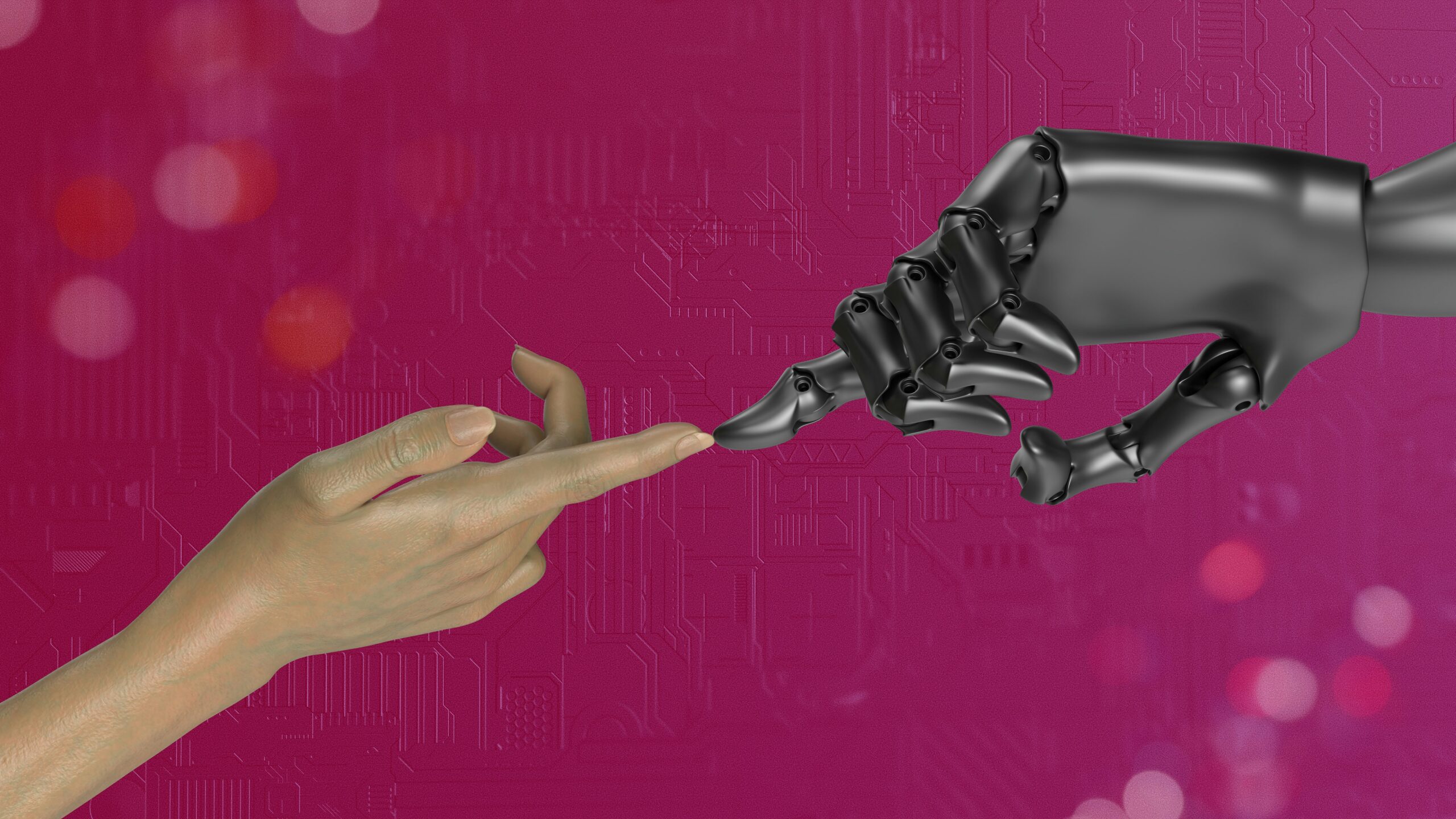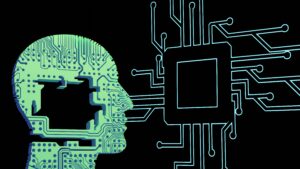In 2025, humans and AI are working together more than ever before. This teamwork is changing jobs, workplaces, and daily life quickly.
How is Human/AI Collaboration Changing Roles in 2025?
Right now, AI and humans regularly team up at work. People focus on creative, emotional, and complex tasks. AI handles repetitive tasks, finding patterns, and analyzing huge data sets. This teamwork is changing many jobs, skills, and workplaces.
Who Does What? A Clear View:
- Humans are best at:
- Emotional understanding and relationships
- Creativity and original thinking
- Complex decisions based on intuition
- Teaching and guiding AI systems
- AI is best at:
- Crunching large amounts of data quickly
- Spotting patterns people miss
- Handling boring or repetitive tasks reliably
- Providing fast and accurate information
Together, humans plus AI achieve more than either alone. The new rule in 2025 is simple: use AI tools for heavy lifting and free up humans to excel at what they’re best at.
Highlights
- Complementary Expertise: The chart clearly shows how AI excels at data processing and repetitive tasks, while humans lead in emotional intelligence and creativity.
- Partnership Model: The most effective workforce in 2025 combines AI's analytical capabilities with human judgment and emotional intelligence.
- Skills Evolution: Human workers are focusing more on skills that AI cannot easily replicate, like complex decision-making and emotional understanding.
- Economic Impact: This collaboration model is projected to add up to $15.7 trillion to the global economy by 2030.
New Skills Workers Need in 2025
Roles and skills are changing because AI is becoming part of the workforce. Here are some important skills people need now:
| Skill | What It Means Simply |
| Teamwork with AI | Knowing how AI tools work and how to collaborate with them |
| Critical thinking | Using human judgment and asking the right questions |
| Emotional intelligence | Understanding feelings, improving communication |
| Flexibility | Quickly adapting to new tools and new roles |
| Digital skills | Feeling comfortable using basic technology and AI tools |
Businesses everywhere now look for these skills when hiring new employees. Schools and workplaces offer short courses to help people learn new ways of working with AI.
Real Life Examples: Human/AI Teams Right Now
Let’s look at two examples of how humans and AI successfully work together:
Healthcare: AI Helping Doctors
Hospitals use AI to analyze medical images like MRI scans. AI quickly identifies problems doctors might miss. Doctors then look at these results closely, combining their experience and judgment with AI accuracy. This teamwork means fewer mistakes and faster diagnoses. One doctor said clearly: “Using AI tools has cut diagnosis time in half and lets me focus more on my patients.”
Science: Finding Cures Faster
At Stanford University, scientists and AI collaborated to find new ways to fight viruses like COVID-19. AI examined huge amounts of data quickly, finding clues humans wouldn’t notice. Scientists guided the process, chose promising options, and tested results. Together, they found new treatments faster than either humans or AI could alone.
Patients and researchers agree: “AI teamwork saved lives by speeding up research. This collaboration is essential now.”
How Human/AI Collaboration Boosts Business and the Economy
Combining human talents with AI can significantly help businesses:
- Increased productivity and profit
- Fewer mistakes and better quality
- Innovations and new ideas
In fact, using human/AI teams could add as much as $15.7 trillion to the global economy by 2030. Many companies already report financial benefits just by using AI in small ways. Asia, especially China, has quickly embraced human/AI teamwork, leading the world in AI applications.
Companies Already Benefiting:
- Retail: Stores use AI to track buying habits and recommend products. Salespeople then focus on providing great customer service.
- Finance: Banks use AI to spot unusual activity quickly. People step in to confirm or solve deeper issues.
- Manufacturing: AI and robots handle repetitive assembly line tasks. Workers supervise and find better ways to organize production.
Managers notice big improvements: “AI handles dull stuff now, so we can focus on making customers happier and improving products.”
Biggest Challenges and How to Solve Them
While human/AI collaboration is great, it’s not always easy. Here are the main issues and ways organizations solve them:
| Challenges | Simple Solutions |
| Fear of Job Loss | Clearly show workers how AI supports, not replaces, their jobs |
| Lack of AI Knowledge | Offer simple training classes regularly |
| Bias and Ethical Risks | Double check AI results and keep humans responsible for final choices |
| Trust Issues | Clearly explain AI decisions and let humans review them |
Companies that follow these steps report fewer issues. Open communication helps workers feel comfortable and confident. As one HR manager says: “When employees trust our process and see AI as friendly support, they happily work hand-in-hand with it.”
Ethical Concerns: Keeping Humans in Charge
Making sure AI stays ethical is important in 2025. People worry that:
- AI could make unfair or harmful decisions
- AI might reduce privacy or increase surveillance
- Companies might rely too much on AI without human checks
Organizations prevent these problems by always having humans oversee AI. Humans check and approve major AI decisions. Keeping a human in charge ensures fairness, trust, and ethics remain a top priority.
How Can Businesses and Workers Adapt Now?
The future is already here. Businesses and individuals must adapt quickly to thrive with AI. Here’s exactly how to get started today:
- Learn New Skills: Join quick training programs covering teamwork with AI, simple tech tools, and emotional intelligence.
- Clearly Define Human/AI Roles: Managers need to say clearly which tasks AI should handle, and what humans will do. Communicate this clearly to workers.
- Ethics First: Create clear guidelines to keep human control over AI decisions. Regularly check that AI outcomes are fair and helpful.
Businesses trying these three steps often say: “We found AI easier to manage when everyone understands their roles. Our workers stayed happy, productive, and felt part of a real team.”
Stay Updated with Reliable Sources
Technology moves fast. To stay informed, follow these simple and reliable resources:
- Social Media Experts: Follow AI experts and startup leaders on LinkedIn or Twitter for short summaries and tips.
- Industry Reports: Regularly read clear and simple reports from Stanford HAI, Deloitte, and McKinsey for fresh data and success stories.
- Webinars and Conferences: Watch short videos from conferences like NeurIPS or ICLR to hear what experts say matters most this year.
- Company Blogs: Follow Google AI, Microsoft AI, and IBM AI blogs for real examples and how businesses use AI successfully. Anthropic and OpenAI blogs should also be in your bookmarks.
These sources are easy ways to stay updated without confusion or complicated words.
Key Points to Remember and Act On Today
Human/AI collaboration will only grow in importance beyond 2025. Remember these key points clearly:
- Humans should focus on creativity, problem solving, and emotional tasks.
- Let AI handle data, repetition, and routine jobs.
- Both businesses and workers must keep learning new skills through simple training sessions.
- Clearly define roles, ensure clear communication, and keep human oversight of AI.
Take these steps right now to adapt easily to the changing world of work:
- Provide easy AI teamwork training for all employees.
- Publish clear and simple guidelines for using AI in the workplace.
- Regularly talk openly with workers about how AI helps—not replaces—them.
The sooner you adapt, the easier and more successful the years ahead will be!




